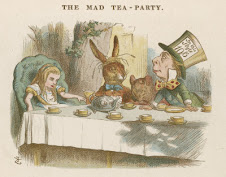Paul Krugman briefly mentions a somewhat intriguing puzzle. Most people, if you ask them about it, would say that political beliefs are “multidimensional.” We often think of a simple 2-dimensional models like the Nolan Chart in which people should be sorted along both a left-right axis about economics, and then along a second axis about social/cultural issues like gay rights. But as Krugman observes, Congress doesn’t work this way.Yglesias quotes Krugman: "Congressional politics is left versus right — end of story. Oh, and polarization along that dimension has increased hugely: the center did not hold." Krugman bases his observations on the work of McCarty, Poole and Rosenthal, who have analyzed political polarization in relation to income inequality and immigration. They write:
We find that the average positions of Democratic and Republican legislators have diverged markedly since the mid-1970s. This increased polarization took place following a fifty-year blurring of partisan divisions. This turning point occurs almost exactly the same time that income inequality begins to grow after a long decline and the full effects of immigration policy liberalization are beginning to be felt.On the basis of Occam's razor, however, one might propose a simple solution to Yglesias's question. American politics is uni-dimensional because, in conformity with the dictates of duopoly ideology, it only allows for the plotting of two points, represented by the positions of Republicans on the one hand and Democrats on the other. To paraphrase Dorothy Parker, American politics runs the gamut from A to B. In politics as in geometry, a second dimension would require a third point of view.
Furthermore, changes in the theory of the form and function of the major parties under the conditions of duopoly following World War II must also figure in any account of the increased polarization observed by McCarty, Poole and Rosenthal. As I have remarked before, the so-called responsible party model of government developed by the American Political Science Association in 1950 explicitly called for the creation of sharply demarcated and oppositional platforms by the ruling parties. In a detailed article from 2007 on "The Rise of Responsible Parties in American National Politics," Nicol Rae concludes:
The irony may be that having finally witnessed the development of ideologically coherent parties that make sense to external observers, political scientists have also become more aware of the potentially unhealthy side effects—partisan rancor, political polarization, policy stasis in a separated national governing system—that may attend such a development. (Rae, p. 188.)







No comments:
Post a Comment